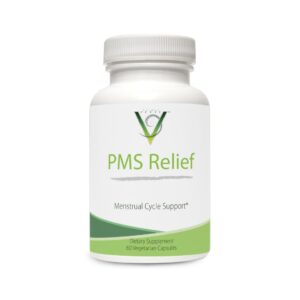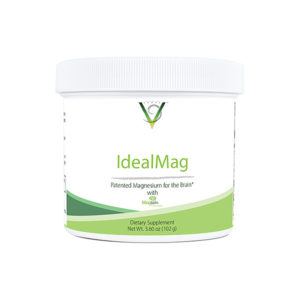Colloidal Silver
$50.00 — or subscribe and save 5%
Colloidal Silver contains 99.99% pure colloidal silver at 10 ppm. The Ancient Greeks, Egyptians and Romans used silver to support immune function. Phoenicians stored water, wine and vinegar in silver bottles to prevent spoiling. Hippocrates, the “father of medicine,” wrote that silver had beneficial properties. In the 1930s, Colloidal silver was a common choice for supporting a healthy immune system. In the mid-1960s, NASA developed a lightweight generator to dispense silver ions into the drinking water aboard Apollo spacecraft to kill bacteria, and in 2015, they approved the use of a silver-based water purification system aboard the International Space Station. Today, silver is experiencing a renaissance as consumers seek out more natural ways to support their health and well-being
Description
Colloidal Silver Key Benefits & Actions:
- Antimicrobial
- Antifungal/ Anti-Candida
- Antibiofilm
- Anti-Parasite
Does Not Contain:
Wheat, gluten, soy, animal or dairy products, fish, shellfish, peanuts, tree nuts, egg, ingredients derived from genetically modified organisms (GMOs), artificial colors, artificial sweeteners, or artificial preservatives.
Vegan
Directions:
Dosage: Adults take 1 teaspoon (tsp) three times daily for one week, then ½ tsp three times daily.
Children 4 years and older take ½ tsp three times daily for one week, then ¼ tsp three times daily.
Do not exceed the recommended daily serving without consulting your health care provider.
Consult your healthcare practitioner prior to use. Individuals taking medication should discuss potential interactions with their healthcare practitioner.
Our Quality:
All Unique Verve Formulas Meet or Exceed cGMP Quality Standards and are manufactured and stored in the temperature and humidity regulated facility in USA.
cGMP = Current Good Manufacturing Practice certification means that every aspect of all Unique Verve manufacturing process has been examined, including laboratory/testing methods (for stability, potency and product formulation)
Only the highest quality sources for raw materials are used.
Made and Packaged in the USA
Supplement Facts:
Serving Size: 1 teaspoon (5 ml)
Servings Per Container: 47
Ingredients:
Colloidal silver, distilled water
Other Ingredients:
Distilled and Purified Water.
LEGAL DISCLAIMER
*Disclaimer: Statements made regarding dietary supplements, or products sold through this website have not been evaluated by the Food and Drug Administration. They are not intended to diagnose, treat, cure, or prevent any disease.Consult your healthcare practitioner prior to use. Individuals taking medication should discuss potential interactions with their healthcare practitioner.[/vc_column_text][/vc_column][/vc_row]
Discussion
Antimicrobial (1,2)
The use of silver in medicine dates back thousands of years, and scientists have long known that the metal is a potent antibacterial agent.
Silver ions perform their deadly work by punching holes in bacterial membranes and wreaking havoc once inside. They bind to essential cell components like DNA, preventing the bacteria from performing even their most basic functions. But silver’s “zombie effect” has gone unrecognized—until now. To uncover this grisly mechanism, scientists first killed a sample of the bacterium Pseudomonas aeruginosa using a solution of silver nitrate. Then, they carefully separated the dead bacteria from the silver solution. When they exposed living bacteria to the dead, they witnessed a microscopic massacre: Up to 99.99% of the living bacteria met their doom.
Antifungal, Anti- Candida (3, 4, 5)
An increase in multidrug-resistant fungal strains and fungal infections have become a major health concern, given that invasive infections by Candida, Cryptococcus, and Aspergillus species have led to millions of mortalities. Conventional antifungal drugs including polyenes, echinocandins, azoles, allylamins, and antimetabolites have been used for decades, but their limitations include off-target toxicity, drug-resistance, poor water solubility, low bioavailability, and weak tissue penetration. Due to the proven antifungal activity of silver nanoparticles (AgNPs), there is a growing interest in their use in the treatment of fungal infections. Silver NPs exhibit high antifungal activity against pathogenic Candida spp. at the concentrations around 1 mg/L of Ag.
Anti-Biofilm (6, 7, 8)
Colloidal silver is an alternative medicine consisting of silver particles suspended in water. After using this solution as a nasal spray, the symptoms of a previously recalcitrant Staphylococcus aureus (S. aureus)-infected chronic rhinosinusitis patient were observed to have improved markedly. At 20 μL colloidal silver reduced biofilm by 98.9%. A maximum biomass reduction of 99.8% was reached at both 100 and 150 μL colloidal silver.
Nontuberculous mycobacteria (NTM) along with Mycobacterium tuberculosis complex and Mycobacterium leprae belong to the family of Actinobacteria and the genus of Mycobacteria. NTM can cause difficult to treat lung infections in susceptible individuals and skin and soft tissue infections (SSTIs) where they usually present as abscesses, sporotrichoid nodules or ulcers. These SSTIs typically occur after trauma, surgery and cosmetic procedures and their prevalence has been increasing in recent years. NTM can also form biofilms and internalize within macrophages and have intrinsic or inducible resistance to most antibiotics and immune system surveillance systems. Colloidal Silver in concentrations of 0.7 ppm and 22 ppm kills the M. abscessus and Mycobacterium avium intracellular complex (MAIC) in planktonic and biofilm forms.
Silver Nanoparticles (AgNPs) highly interrupted bacterial multiplication and biofilm formation. AgNPs downregulated the transcription level of important virulence and biofilm-related genes.
Anti-Parasite (9,10)
Colloidal Nanosilver exerted anthelmintic action superior to one of the positive controls (Benzimidazole), and almost at par to another positive control (Ivermectin). At concentrations ≥ 2 ppm, it could kill all the worms present in the experimental well. Lower concentrations of silver were found to have a cuticle-damaging action on worms.
Recently, AgNPs synthesized from plant extracts have exhibited outstanding antiparasitic effects, with a shorter duration of use and enhanced ability to inhibit parasite multiplication compared to traditional antiparasitic drugs.
REFERENCES
-
Antimicrobial Silver in Medicinal and Consumer Applications: A Patent Review of the Past Decade (2007–2017): https://www.ncbi.nlm.nih.gov/pmc/articles/PMC6315945/
-
Silver turns bacteria into deadly zombies: https://www.science.org/content/article/silver-turns-bacteria-deadly-zombies
- Biogenic silver nanoparticles as antifungal agents: https://www.frontiersin.org/articles/10.3389/fchem.2022.1023542/full
-
Striking Back against Fungal Infections: The Utilization of Nanosystems for Antifungal Strategies: https://www.mdpi.com/1422-0067/22/18/10104
-
Antifungal activity of silver nanoparticles against Candida spp.: https://www.sciencedirect.com/science/article/abs/pii/S0142961209008023
-
Colloidal silver: a novel treatment for Staphylococcus aureus biofilms?: https://onlinelibrary.wiley.com/doi/10.1002/alr.21259#:~:text=This%20study%20shows%20that%20higher,presence%20when%20compared%20with%20control.
-
Colloidal silver against macrophage infections and biofilms of atypical mycobacteria: https://www.ncbi.nlm.nih.gov/pmc/articles/PMC10393856/
-
Antibiofilm and antivirulence potential of silver nanoparticles against multidrug-resistant Acinetobacter baumannii: https://www.nature.com/articles/s41598-021-90208-4
-
Potent anthelmintic activity of a colloidal nano-silver formulation (Silversol®) against the model worm Caenorhabditis elegans: https://www.ncbi.nlm.nih.gov/pmc/articles/PMC10318827/
-
Application of Silver Nanoparticles in Parasite Treatment: https://www.ncbi.nlm.nih.gov/pmc/articles/PMC10384186/
Only logged in customers who have purchased this product may leave a review.











Reviews
There are no reviews yet